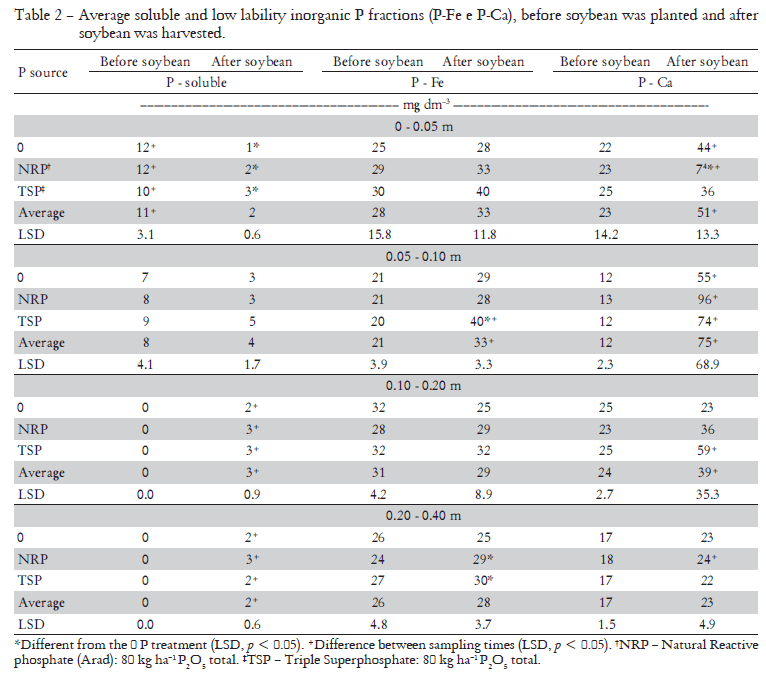Under no-till phosphorus (P) accumulates in a few centimeters of the topsoil layer. Plant residues left on the soil surface release P and organic acids, which may improve P availability and fertilizer efficiency, including both soluble (such as triple super phosphate) and less soluble sources (such as reactive natural phosphates). In this study, soybean response to P fertilizer and P forms in the top 40 cm of an Oxisol were evaluated after surface application of different phosphates in a 5-year-old no-till system. Treatments consisted of 0 or 80 kg ha-1 of total P2O5 applied on the soil surface, both as natural reactive phosphate (NRP) or triple super phosphate (TSP). In addition, 80 kg ha-1 of P2O5 were applied to subplots, in furrows below and beside the soybean (Glycine max L.) seeds, in different combinations of NRP and TSP. Soil samples were taken before and after the soybean growth, down to 0.40 m and soil phosphorus was chemically fractionated. The responses to NRP were similar to TSP, with an increase in P reserves at greater depths, even in non-available forms, such as P-occluded. After the soybean harvest, P-occluded levels were lower at the surface layer, but an increase was observed in the soluble, organic and total P down to 40 cm. An improved P distribution in soil depth, especially regarding the soluble and organic forms, resulted in higher soybean yields, even when the phosphates were applied to the soil surface.
reactive phosphate; superphosphate; phosphorus fractions; conservation tillage




